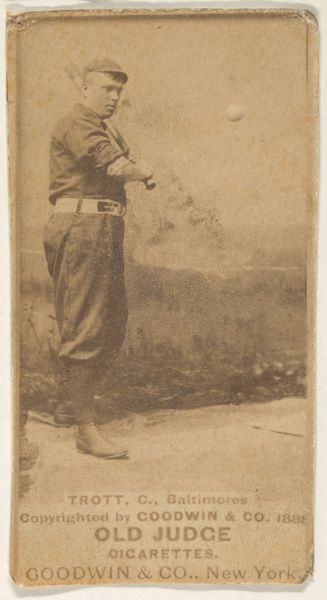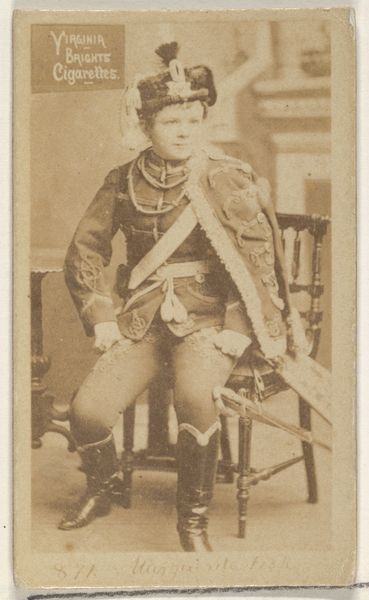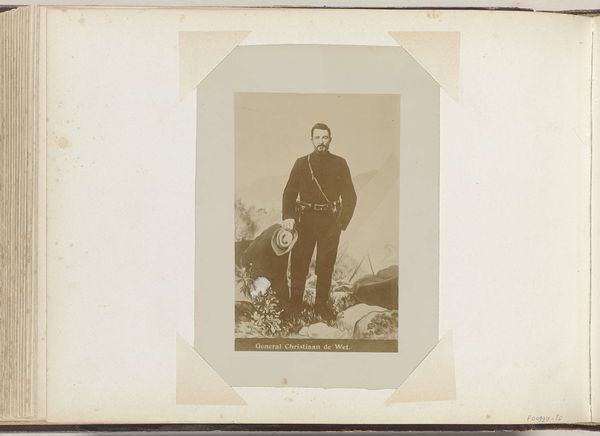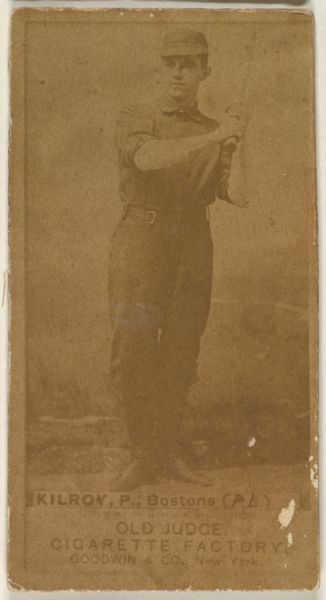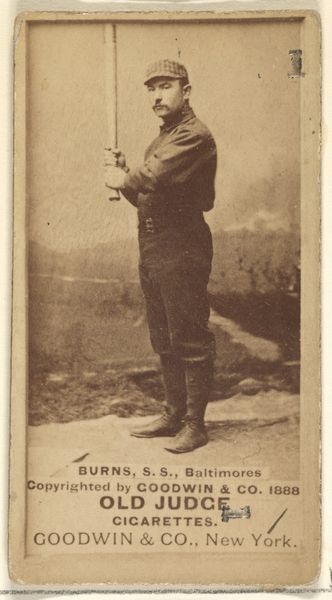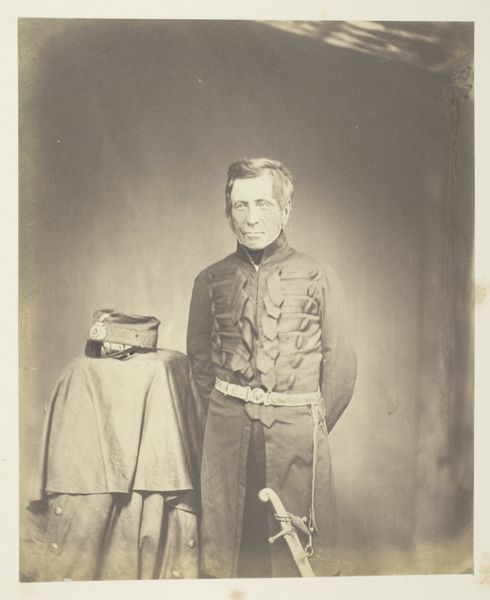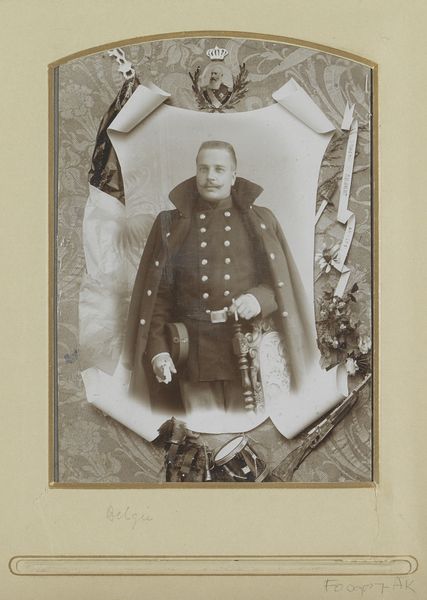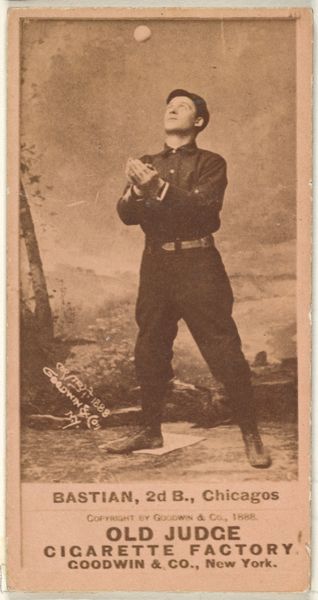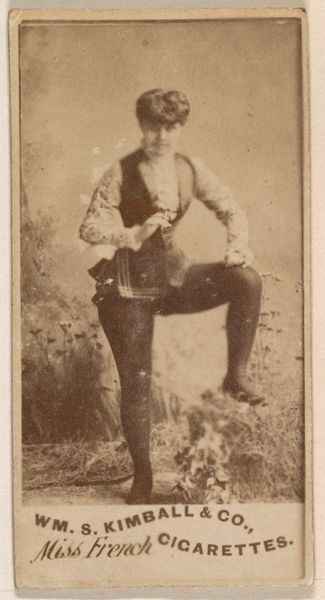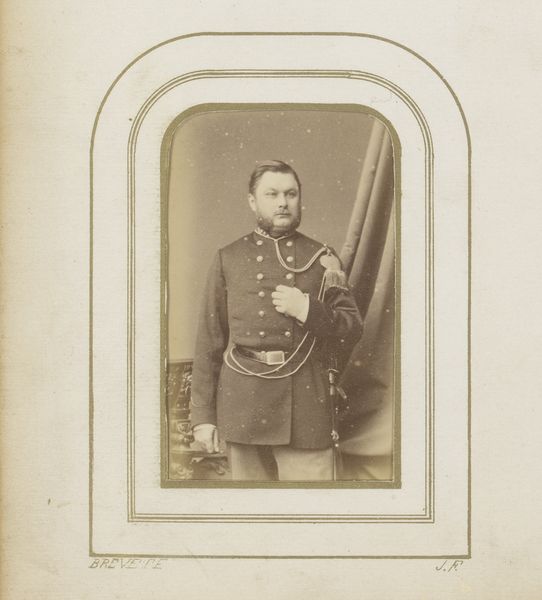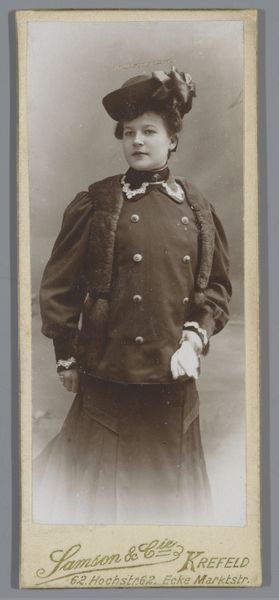![[Boy in Uniform] by Jean-Baptiste Frénet](/_next/image?url=https%3A%2F%2Fd2w8kbdekdi1gv.cloudfront.net%2FeyJidWNrZXQiOiAiYXJ0ZXJhLWltYWdlcy1idWNrZXQiLCAia2V5IjogImFydHdvcmtzL2NlYTE1YWE1LTJlY2MtNGMxNi1iMzE2LWMwMTIzMTk5NWJmZC9jZWExNWFhNS0yZWNjLTRjMTYtYjMxNi1jMDEyMzE5OTViZmRfZnVsbC5qcGciLCAiZWRpdHMiOiB7InJlc2l6ZSI6IHsid2lkdGgiOiAxOTIwLCAiaGVpZ2h0IjogMTkyMCwgImZpdCI6ICJpbnNpZGUifX19&w=3840&q=75)
daguerreotype, photography
#
portrait
#
daguerreotype
#
photography
#
genre-painting
#
realism
Dimensions: 24.5 x 17.9 cm (9 5/8 x 7 1/16 in. )
Copyright: Public Domain
Editor: Here we have Jean-Baptiste Frénet's "[Boy in Uniform]," a daguerreotype from somewhere between 1853 and 1857. The mood is contemplative, and almost melancholy, even. What's your take on this portrait, particularly regarding the boy's social context? Curator: That melancholy mood you pick up on is precisely what draws me in. Beyond just a portrait, it’s a document of societal expectations, wouldn’t you agree? What does the uniform signify? Think about the period; we're looking at a very specific form of masculinity being imposed on young boys, potentially stripping them of childhood innocence to serve a budding nationalist sentiment. Editor: I see what you mean. The uniform *is* a powerful symbol. Does the then-new technology of the daguerreotype play into that message somehow? Curator: Absolutely! Photography in its infancy was both accessible and used as a means to disseminate and immortalize these ideologies. This image isn't just about a boy; it's about manufacturing a particular ideal, literally capturing it in a permanent medium. Think about how this image would have been received – was it about celebrating an individual, or reinforcing a system? Editor: That makes me consider the gaze of the boy himself; he doesn't seem completely at ease. Almost as if he is reluctantly complying to the performative aspect you’re describing. Curator: Precisely! He is not an active participant, which leads to further reflection: who benefits, and whose narrative is told through this image? Considering those questions, it really pushes us to look critically at how identities were – and continue to be – shaped and constrained by visual representation, wouldn't you say? Editor: I never thought a portrait could speak volumes on such complicated and timeless topics. Thanks so much for your insights! Curator: The beauty of art lies in these multifaceted perspectives!
Comments
No comments
Be the first to comment and join the conversation on the ultimate creative platform.
